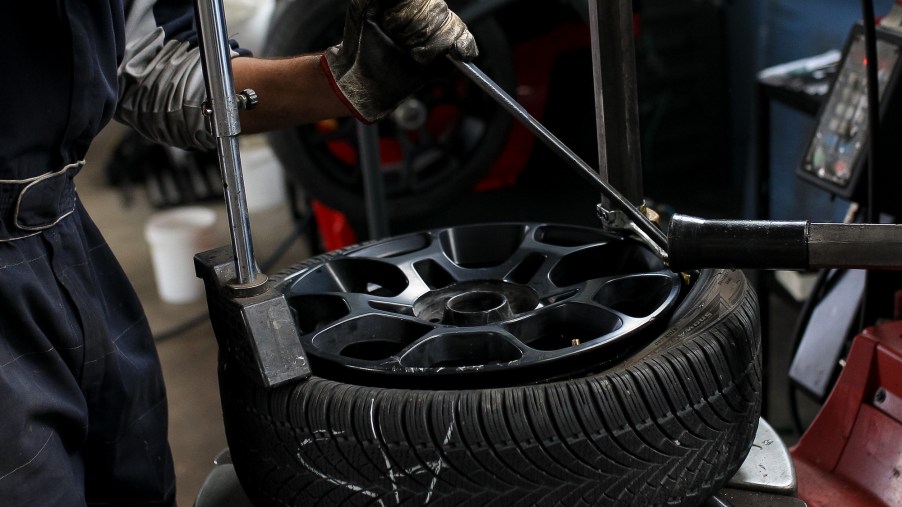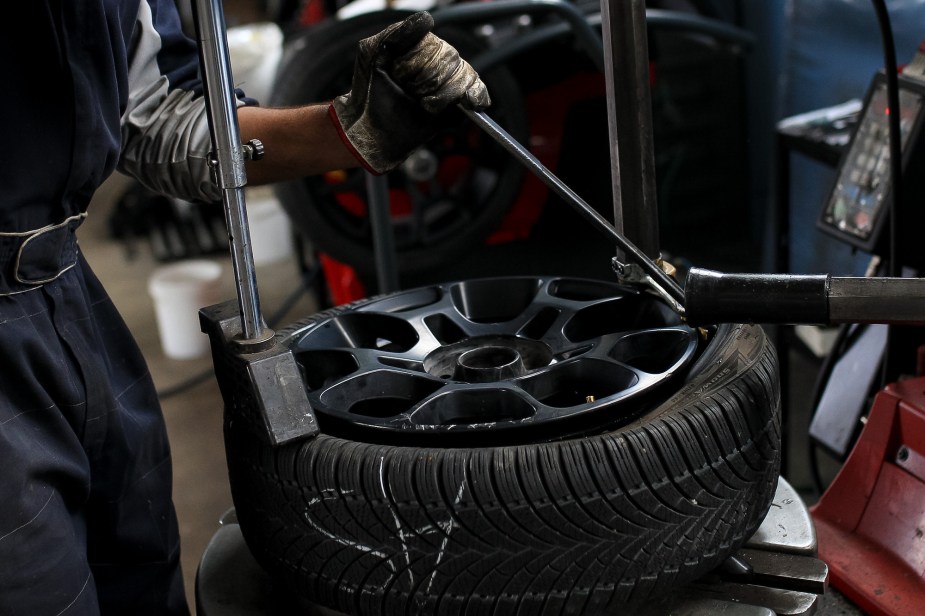
What Led to the Giant Rim Craze?
From the fuzzy dice of the 50s to the car lashes of the 2010s, automotive accessory trends permeate every era. Throughout the 2000s, it was hard to drive more than a few minutes without passing a car sporting giant rims, an accessory still found in heavy use in many parts of the country. You may have wondered how this trend originated and why these car accessories have lasted longer than some may have once thought.
The giant rim craze of the 2000s

The 2000s saw several aftermarket modifications capture the popular imagination, but perhaps none as pervasive as giant rims. You could find them on vehicles ranging from small sedans to large SUVs and everything in between. Some rims were large enough that you might need assistance getting into the vehicle they were on.
The rim craze refers to an aftermarket modification in which large wheels and low-profile tires are placed on a vehicle. Typically, your average vehicle has a wheel size between 14 and 19 inches in diameter, with smaller vehicles averaging around 14 to 16 and sportier SUVs at the top of the range.
When we talk about giant rims, we’re talking about adding 18, 20, or 22-inch rims on a vehicle that comes from the factory with 16-inch rims. Or where you might have 18-inch wheels, you might have wheels sizes as large as 24-inches. These wheels require tires with low aspect ratios, typically 55 percent or less, to operate smoothly. Low-profile tires were historically used for sports cars to improve performance but saw increasing popularity when the giant rim craze began.
How the giant rim craze started
If you take a close look at the rim craze of the 2000s, you’ll see that it started well before that. Complex notes that oversized rims could be found throughout the drag racing craze between 1945 and 1960, particularly in L.A. The trend continued throughout the Seventies in Southern California, with aftermarket modification specialists leveraging technology from the nearby aerospace industry to modify and enlarge rims.
This period saw the emergence of donks – convertibles or hardtops that are elevated to make room for large wheels. However, as gas prices began to rise during this period, interest waned a bit until the emergence of lowrider culture in this part of the country.
Hip-hop artists began to popularize customized rims as far back as the Eighties. You’ll find odes to slabs – elbow rims in Houston hip-hop and chrome rims and spinning rims in East Coast and West Coast hip-hop of the 80s and 90s. In the early 2000s, several high-profile hip hop artists, like Nelly, Outkast, and Lil Wayne, helped further the craze through music, marketing materials, car show appearances, and custom rim lines.
Hip-hop fans weren’t the only fans to embrace giant rims. As per Erie Insurance, Hollywood also helped fuel the craze with blockbusters like the Fast and the Furious franchise and shows like Monster Garage. While these rims were initially the province of the wealthy, giant rims dropped in price precipitously during the early 2000s. More tire manufacturers could produce the low-profile tires necessary for large-diameter wheels, making them a bit more accessible for those with a decent amount of disposable income. Complex also notes that a new method of cheap prototyping also reduced the production costs associated with customized rims.
The rise of the spinning rims
Giant rims were just one part of the craze. The 2000s also saw other audacious wheel-based modifications. One of these was spinning rims or spinners, which consist of a wheel-mounted center cap that spins independently of the wheel itself. In fact, it continues spinning even when the car is at rest. As such, it definitely captures attention.
The popularity of spinning rims owes much to former NBA basketball player Latrell Sprewell. On an MTV Cribs episode, Sprewell showcased a car with spinning rims in 2001 that viewers found fascinating. Not only did he partner with a sneaker company to create custom sneakers with rims built in them, but he also became so associated with them that for a time, spinning rims became colloquially referred to as “Sprewells.”
Hip-hop songs, such as Three 6 Mafia’s “Riding Spinners,” also helped fuel interest. And as they’ve grown in popularity in the U.S., fueled by athletes and the entertainment industry, they’ve also found a foothold abroad, with spinning rim manufacturers operating in Africa, Europe, and Asia, among other areas.
Some drivers have believed that a spinner’s motion signaled a moving car rather than a stationary one. And, mistakenly slamming on the brakes or switching lanes, they’ve risked an accident. But despite complaints, it does not seem that the market for spinners or other rim customizations will diminish significantly soon.


